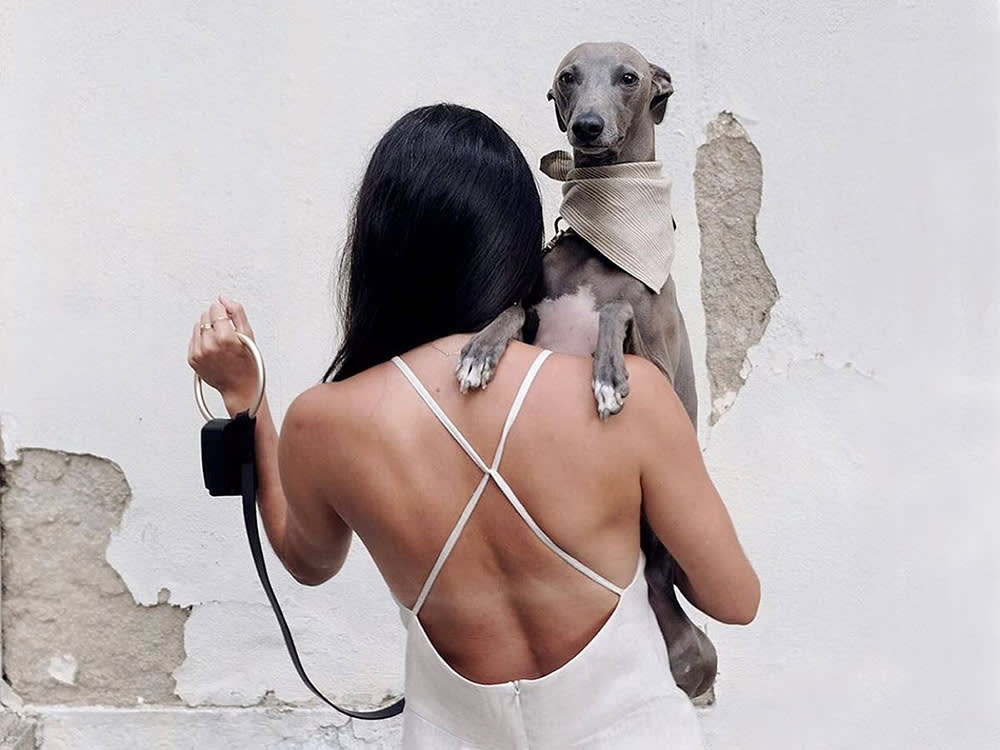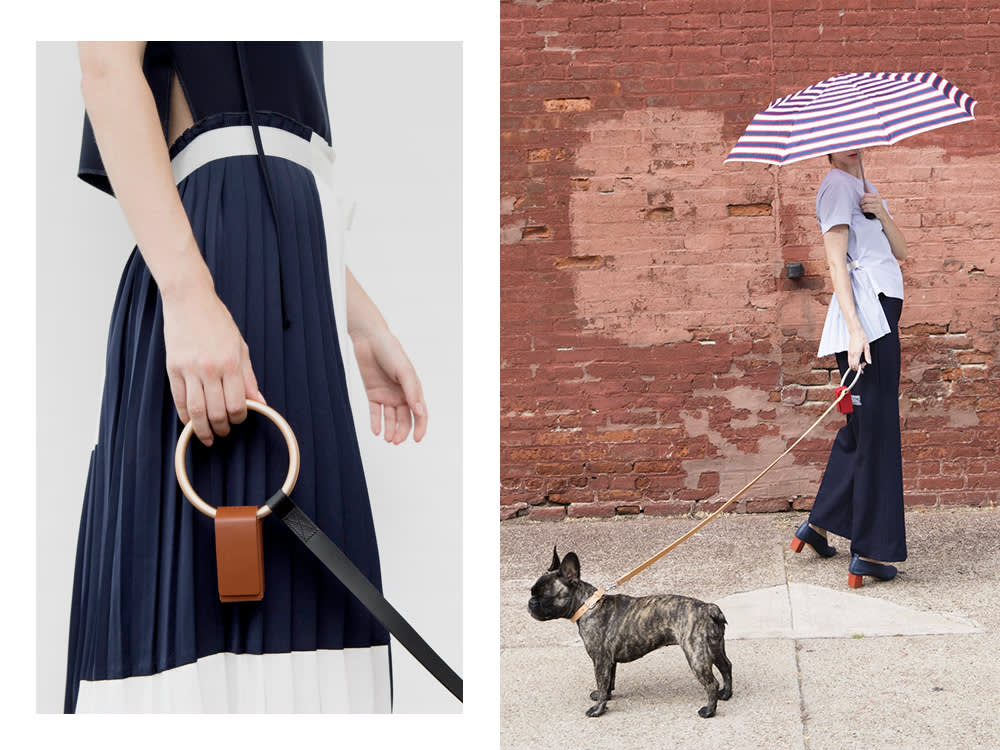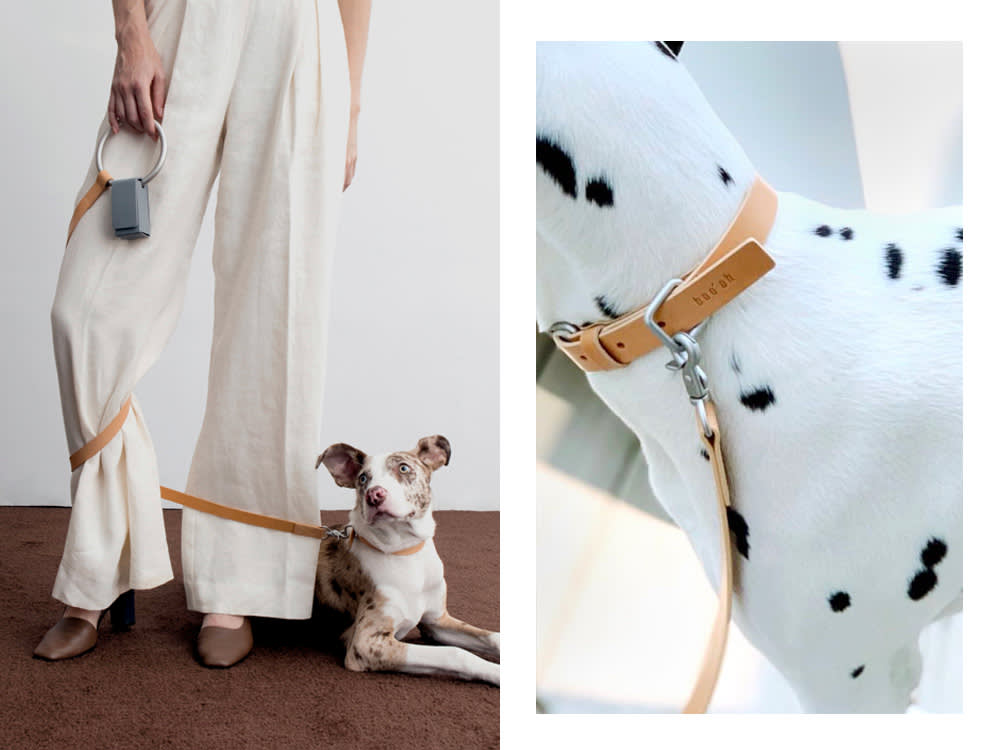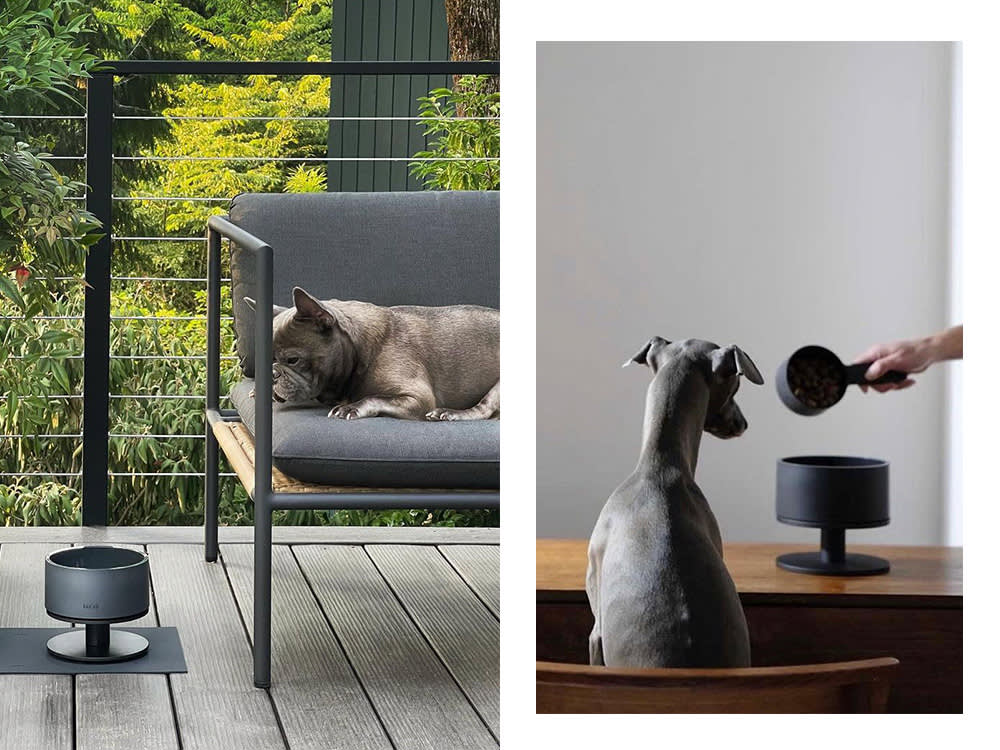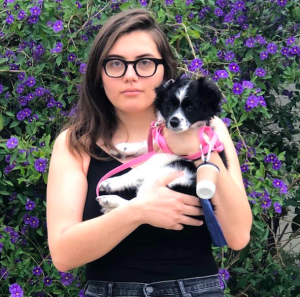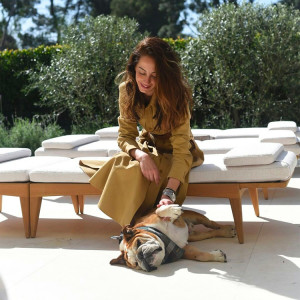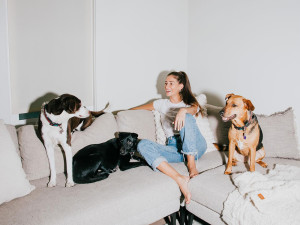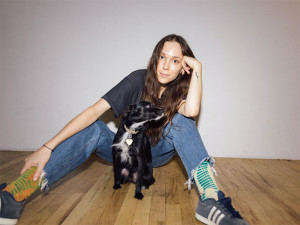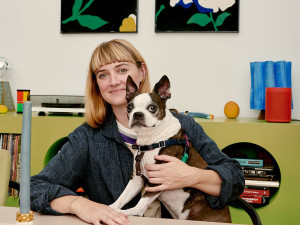Boo Oh: An Industrial Designer’s Creative Take on Pet Products
Jay Sae Jung Oh’s bespoke furniture has been featured in Architectural Digest, but her Frenchie, Boo, inspired her elevated pet brand.
It’s been nearly 10 years since Jay Sae Jung Oh brought Boo home, and it has been a pretty prolific decade. The South Korean, Seattle-based industrial designer’s bespoke furniture collectionopens in new tab of “sculptural castaways” — broken chairs, bicycles missing wheels, and other thrifted items wrapped in jute cord to create functional art — earned her a feature in Architectural Digestopens in new tab and a Best in Show award at Design Miami.opens in new tab
But the professional milestone that may make her Frenchie most proud? Boo Ohopens in new tab, his eponymous line of elevated pet essentials. From sleek silicone bowls that are BPA-free and hypoallergenic to silk blend and vegetable-tanned Italian leather collars and leashes in neutral hues, Jung Oh’s minimalist pieces are as chic as they are practical. Below, we chat with her about the brand that lives at the intersection of art and design, as well as the market need that inspired it.
Save on the litter with color-changing tech that helps you better care for your cat.
What was your inspiration for starting Boo Oh?
I wasn’t really interested in pet products [at the beginning of my career]. I am a furniture designer and product designer; that’s my original job. Then after I got Boo, I realized that there’s not that many [quality product] options for dog owners. Boo is kind of special; she’s a super hyper Frenchie and she tears up everything so quickly. Especially when I take her on a walk — the harnesses I put on her would break all the time because she is a really heavy puller.
That is just one example, but I found a lot of problem-solving opportunities as an industrial designer. It’s a habit — if there’s a problem I try to fix it to offer a better experience. So I started to design for Boo, but I never imagined that I was going to have a brand for pet products.
So it’s all part of creating a better experience.
Yeah, that’s why we patent everything. Even the poop bag holders — I just hated how it was always dangling, hitting my thigh when I was walking. Right now there are a lot of great brands out there, but back then in 2013 there were really not that many options on the market. Most of the products were very price competitive, so the quality wasn’t really great. Sometimes Boo would just tear things up in a day or in a couple hours. I was kind of tired of having to keep replacing things over and over.
As a furniture designer, you consider materials consciously. How does sustainability figure into your designs for Boo Oh?
It’s a pretty different approach. My furniture is more about the concept and how I can fix [the viewer’s] idea and how I can change their point of view to look at what we’re surrounded by. But the mass-produced product market is a totally different approach. The idea was the same, [with the pet products] I didn’t want them to get thrown away easily and I wanted people to use them for a long time. It’s the same thinking basically, but the approach was very different.
Totally, it’s definitely a completely different execution because with your furniture it’s so much more about the art of it and you don’t have to make so many of them.
Yeah, I do a lot of client projects and because I’m an industrial designer, I have my own suppliers for each material. None of our products are things that you can get from any supplier; they’re not things that you can easily find from like Alibaba or something. We know who the best supplier is for each category and that’s something that can differentiate us from other brands, I think.
Do you have any design role models, whether for Boo Oh or with your other design work?
I don’t have any specific role models honestly; [I just went into Boo Oh not] wanting to have constraints or boundaries. I just wanted to kind of do whatever, basically. That’s why people can’t understand sometimes like, “You can make more money on the furniture; why do you do this kind of thing?” A lot of people couldn’t understand why I was suddenly making pet products, like, “It’s so totally not related, why don’t you just go make furniture or household objects, utilize what you’ve built so far.”
But to be honest, I could see the potential here when I realized that there’s something that I can do in this market. I wasn’t like, “Oh, I was really into pet products" or “I’m an animal lover” — I am an animal lover, but that’s not it. That doesn’t make me just launch a brand, right? I just saw huge potential in this market and saw that there are a lot of things that I can fix. Plus I’m living with Boo and with her I’m always testing, finding problems, and continuously trying to fix them.
